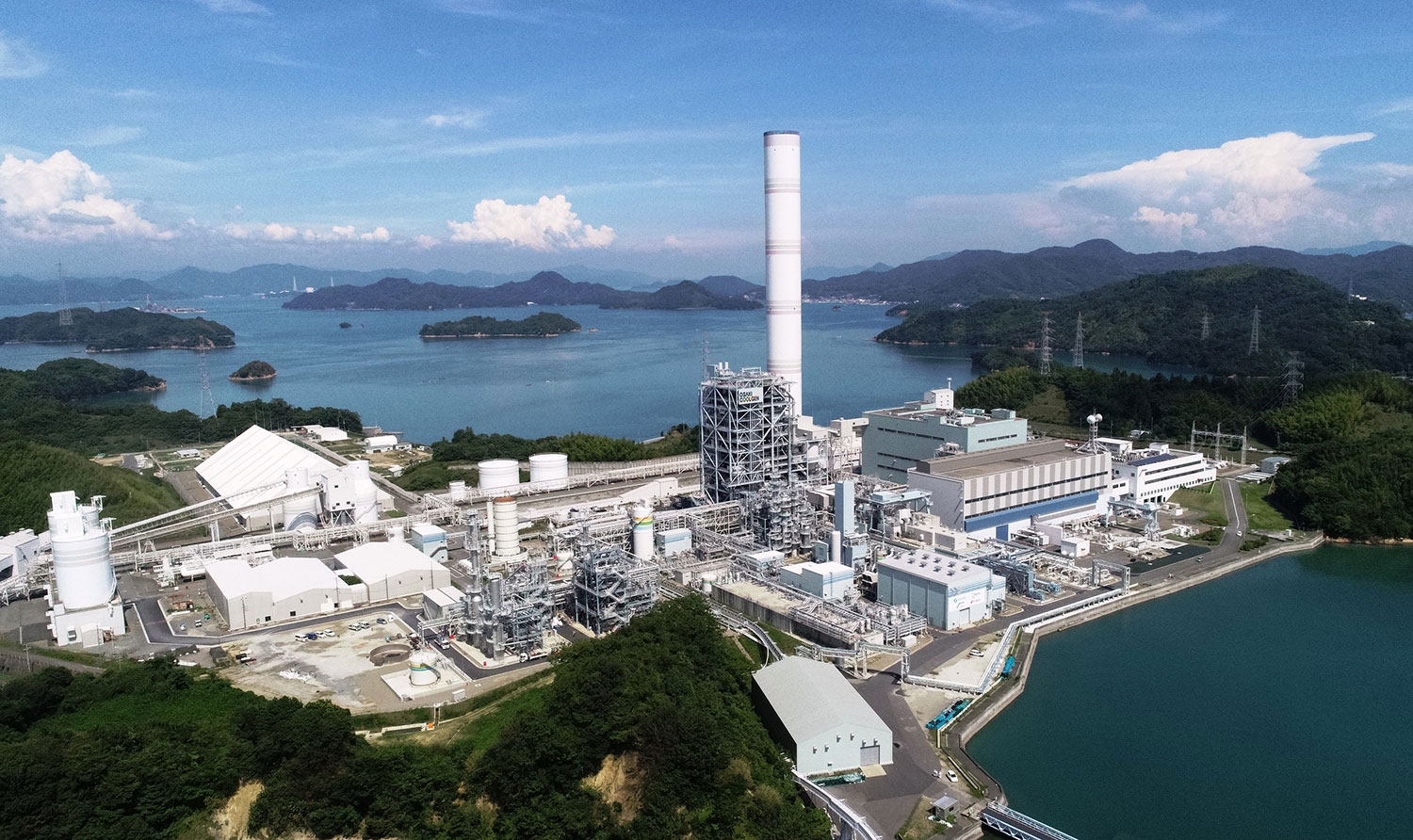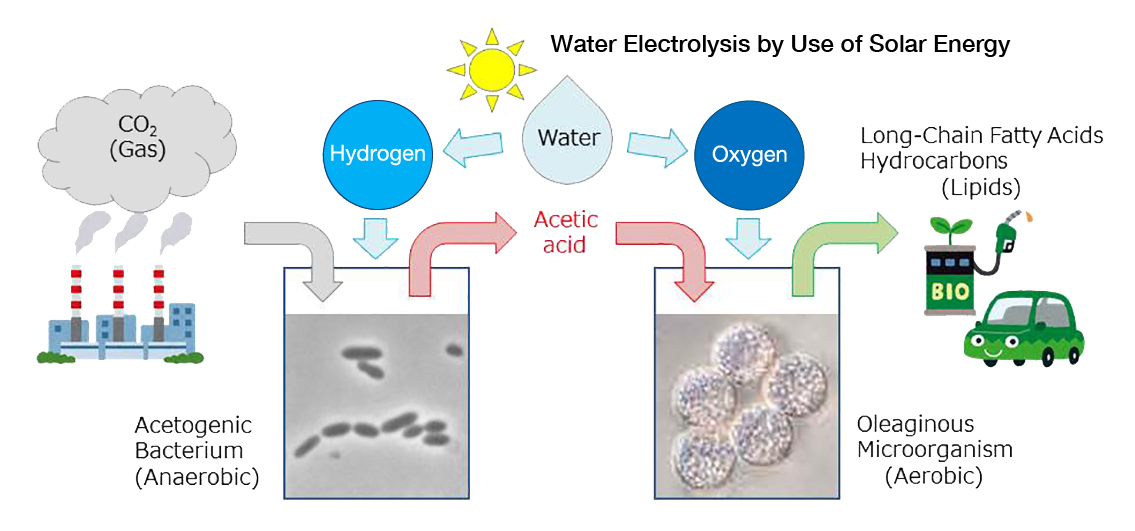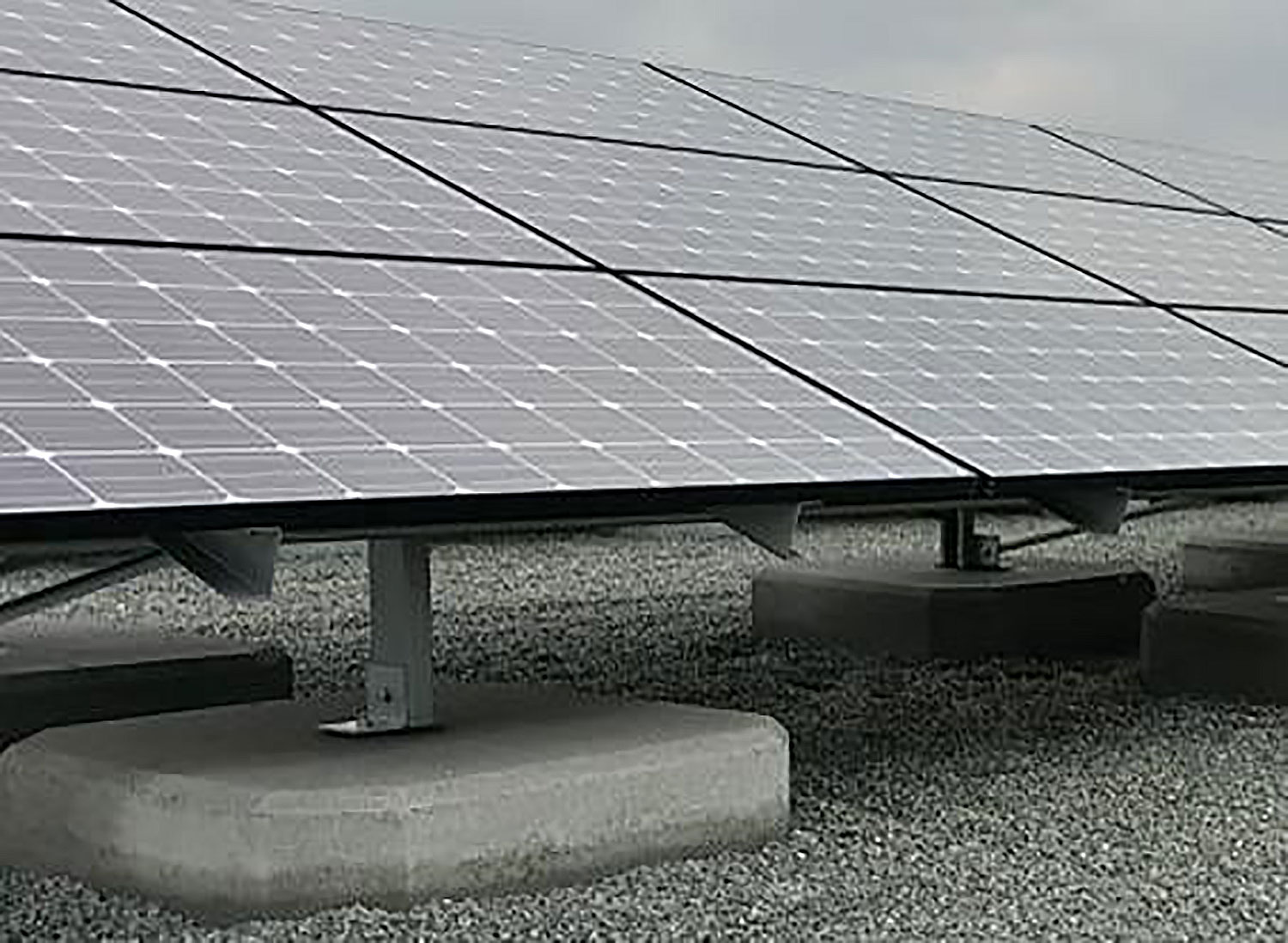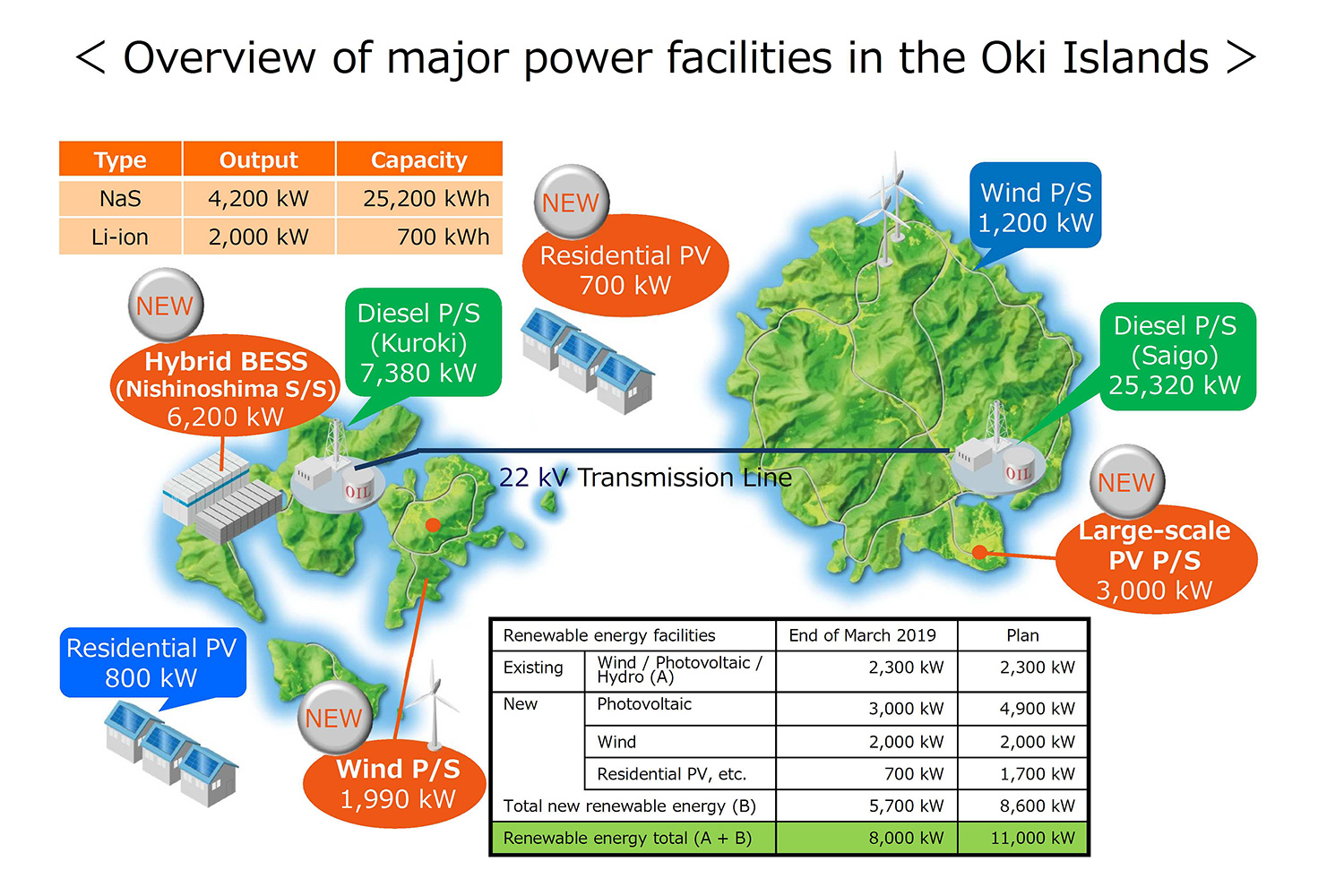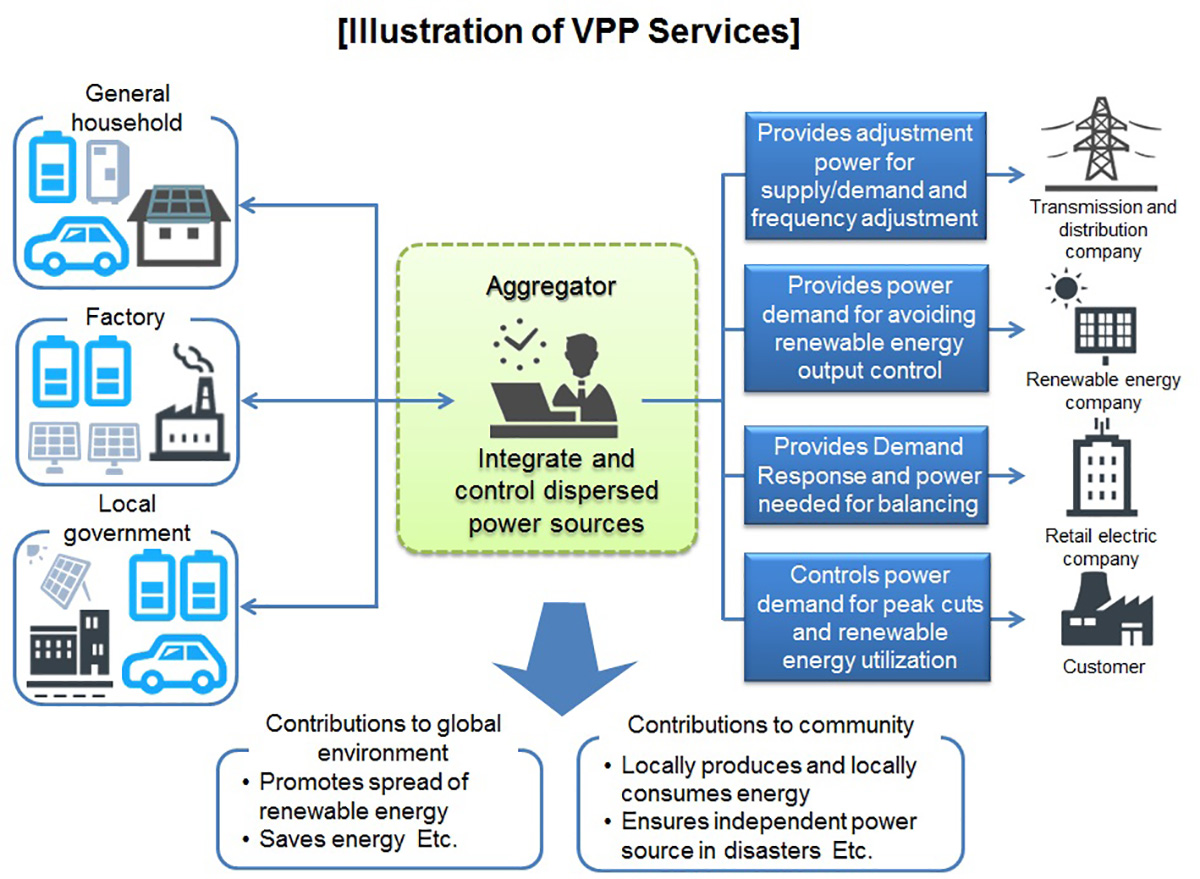Demonstration and development of the ultimate high-efficiency coal-fired power generation (IGFC)
The Chugoku Electric Power Company, Incorporated
Outline
Chugoku Electric Power will contribute towards lower CO2 emission in coal-fired thermal power through the efforts of the OSAKI CoolGen Project, which aims to achieve zero-emissions coal-fired power generation by combining the integrated coal gasification fuel cell combined cycle (hereinafter, "IGFC"), the ultimate high-efficiency coal-fired power generation, with CO2 capture.
This project consists of three steps. In the first step, we performed demonstration tests for "oxygen-blown integrated coal gasification combined cycle" (hereinafter, "oxygen-blown IGCC") technology - the base technology for IGFC. In the second step, we are performing demonstration of oxygen-blown IGCC with CO2 capture, and then in the third step, perform demonstration of IGFC with CO2 capture equipped with a fuel cell.
These efforts are implemented jointly with Electric Power Development Co., Ltd., as a project subsidized by the Ministry of Economy, Trade and Industry since FY 2012 and by the New Energy and Industrial Technology Development Organization (NEDO) since FY 2016, in accordance with the technical roadmap on next-generation thermal power generation determined by the Ministry of Economy, Trade and Industry.
Description
In the first step, we verified the basic performance, plant operability, reliability, and economic feasibility of a coal-fired power system that relies on the oxygen-blown IGCC technology.
Oxygen-blown IGCC technology generates power using a combined cycle that joins together two types of generation forms, a gas turbine that burns syngas from gasified coal and a steam turbine that uses the exhaust heat from the gas turbine, thereby achieving high generation efficiency and reducing CO2 emissions. Furthermore, oxygen-blown IGCC uses oxygen when creating gas from the coal. As there is a high concentration of carbon monoxide (CO) in the syngas, it can be efficiently separated and captured as CO2, making this generation technology optimal for CCUS.
Regarding the results of the oxygen-blown IGCC demonstration for the first step, we achieved a net thermal efficiency of 40.8% (higher heating value-based,hereinafter,”HHV”), the highest level of performance in the world for a 170,000 kW-class coal-fired plant, and obtained a prospect of achieving a net thermal efficiency of approximately 46% (HHV) at a commercial power plant using a 1,500°C-level gas turbine (generation output 500,000 kW scale). Compared to the ultra-supercritical (USC) pulverized coal-fired power widely in use today, we believe this technology can cut the amount of CO2 emissions by about 15%.
Regarding plant controllability and operability, we not only significantly exceeded our target to achieve a load change rate up to 16% per minute, we also confirmed stable operation with net output at 0 MW and confirmed that generation output can be dynamically controlled. Thereby, we demonstrated that the technology has a high level of operability and can be used as a power source to handle abrupt output fluctuations in renewable energy, which is increasingly being implemented.
In the second step, we are going to verify the basic performance, plant operability, reliability, and economic feasibility of a coal-fired power system that relies on IGCC with CO2 capture technology, through a combination of the oxygen-blown IGCC with the CO2 capture. To tackle the issue of reduced generating efficiency due to the energy loss that occurs during CO2 capture, we are going to apply the results to a commercial power plant (1,500°C-level IGCC) with the new technology implemented in order to obtain a prospect of achieving a net thermal efficiency equivalent to the current cutting-edge pulverized coal-fired power generation technology, while also capturing 90% CO2.
In the third step, we will carry out demonstrations for achieving a CO2 capture-type integrated coal gasification fuel cell combined cycle (IGFC) system with a fuel cell.
The demonstration of an IGFC system is the first effort of its kind in the world. In this project, we will add a fuel cell to the oxygen-blown IGCC with CO2 capture demonstration unit we have constructed for the second step in order to confirm the applicability of syngas coal gas for fuel cells.
We aim to obtain a forecast of achieving a net thermal efficiency of 47% (HHV) while capturing 90% CO2, when applied to a 500,000 kW level commercial unit.
We are also proceeding with investigations towards demonstration of carbon recycling, which effectively uses the CO2 captured from the IGCC as a resource for various application, the first effort of its kind in Japan. We will investigate the possibilities for the effective use of CO2, specifically including liquefying and transporting CO2 captured from the second step unit for research on producing bio-fuel from microalgae or the tomato garden jointly operated by Electric Power Development Co., Ltd. and Kagome Co., Ltd. in Kitakyushu City or for environmentally-friendly concrete developed by Chugoku Electric Power.
Partner(s)
New Energy and Industrial Technology Development Organization (NEDO)
Electric Power Development Co., Ltd.
The OSAKI CoolGen Corporation
Supplementary information
The OSAKI CoolGen Corporation HP
https://www.osaki-coolgen.jp/en/
Other Innovation Challenges
Development of a novel bioprocess to recycle CO2
The Chugoku Electric Power Company, Incorporated
Reusing Coal Ash as Civil Engineering Material Through CO₂ Absorbing Technology Using Microwave Irradiation
The Chugoku Electric Power Company, Incorporated
Technical Development and Popularization of Efficient CO2-Use Concrete
The Chugoku Electric Power Company, Incorporated
The Installation of a Hybrid Battery for Expansion of Renewable Energy Introduction in Oki Islands
The Chugoku Electric Power Company, Incorporated
VPP Demonstration Project for Reuse Technology of EV Drive Batteries
The Chugoku Electric Power Company, Incorporated
Similar Innovation Challenges
Accelarating the penetration of renewable energy resources with “Open Energy System”
Sony Group Corporation
Achieving net-zero carbon emissions from plant factories using full artificial lighting
Taikisha Ltd.
Advanced technology for buildings providing energy-saving and comfortable indoor environment (under Net Zero Energy condition)
Mitsubishi Electric Corporation
AI control reduces base station power consumption by up to 50%
KDDI CORPORATION



